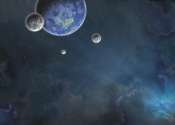As cool as the human body: Wise mission discovers coolest class of stars
(PhysOrg.com) -- Scientists using data from NASA's Wide-field Infrared Survey Explorer (WISE) have discovered the coldest class of star-like bodies, with temperatures as cool as the human body.









